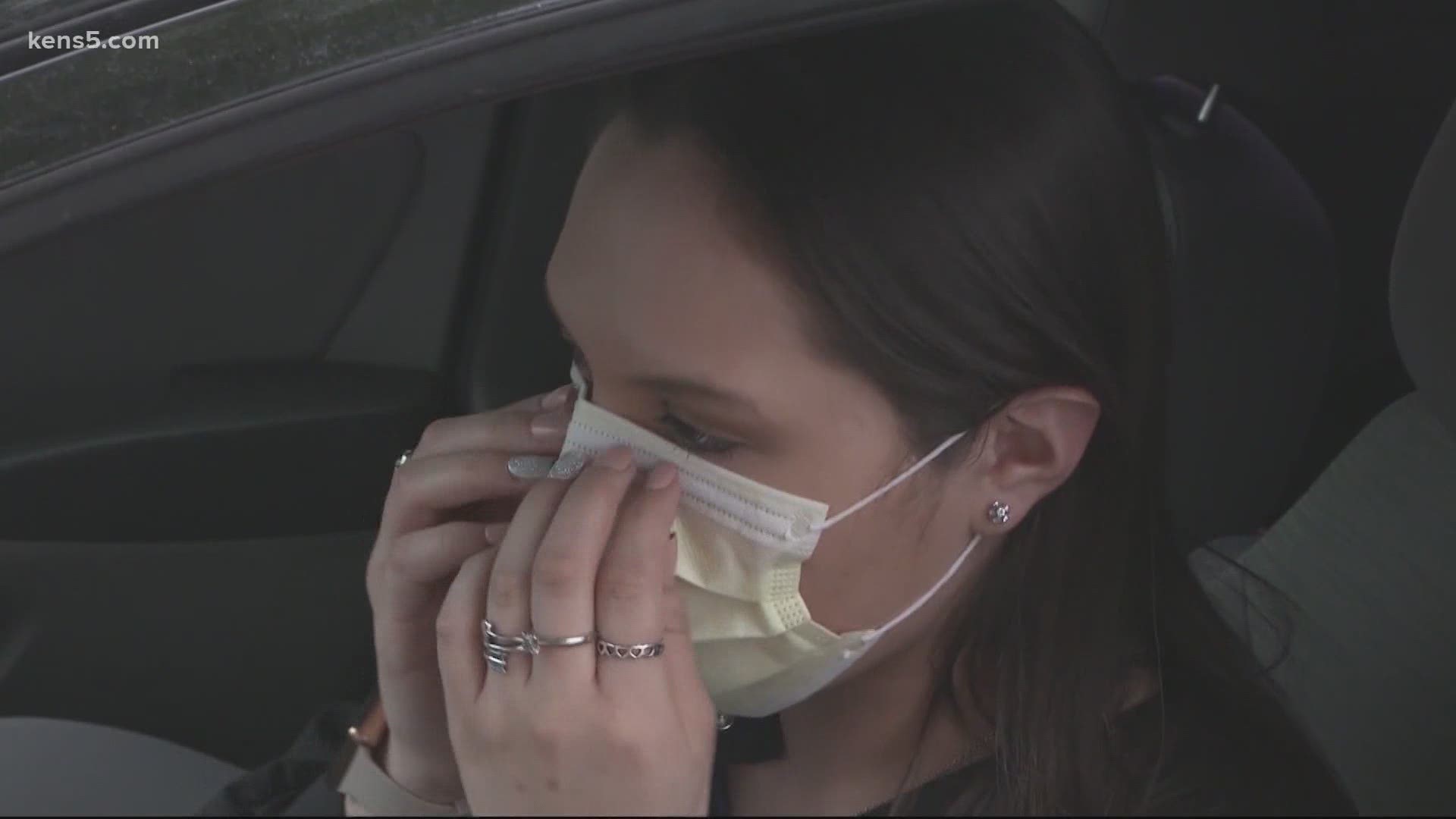SAN ANTONIO — We're tracking the latest numbers from the coronavirus pandemic in San Antonio and across Texas. Here are the latest numbers reported by Bexar and surrounding counties:
- Bexar County: 478 cases and 11 fatalities from COVID-19 were reported Friday. There have been a total of 27,525 cases and 240 virus-related fatalities in the county.
- Comal County: 109 new cases were reported Saturday. There have been a total of 1,667 cases and 3 virus-related fatalities in the county.
- Hays County: 49 new cases were reported Thursday, along with three additional virus-related deaths. There have been a total of 3,865 cases and 17 virus-related fatalities in the county.
How Bexar County is trending:
We're tracking how many coronavirus cases are confirmed in Bexar County each day from the time San Antonio Metro Health began reporting cases more than two months ago. Graphing those daily case numbers along a 14-day moving average provides an accurate picture of the curve in the San Antonio area and the direction we're heading amid the coronavirus.
On Friday, Mayor Ron Nirenberg reported 478 new cases of the novel coronavirus, bringing the total for Bexar County to 27,525. 11 additional virus-related deaths were also reported, bringing that total 240 for the county.

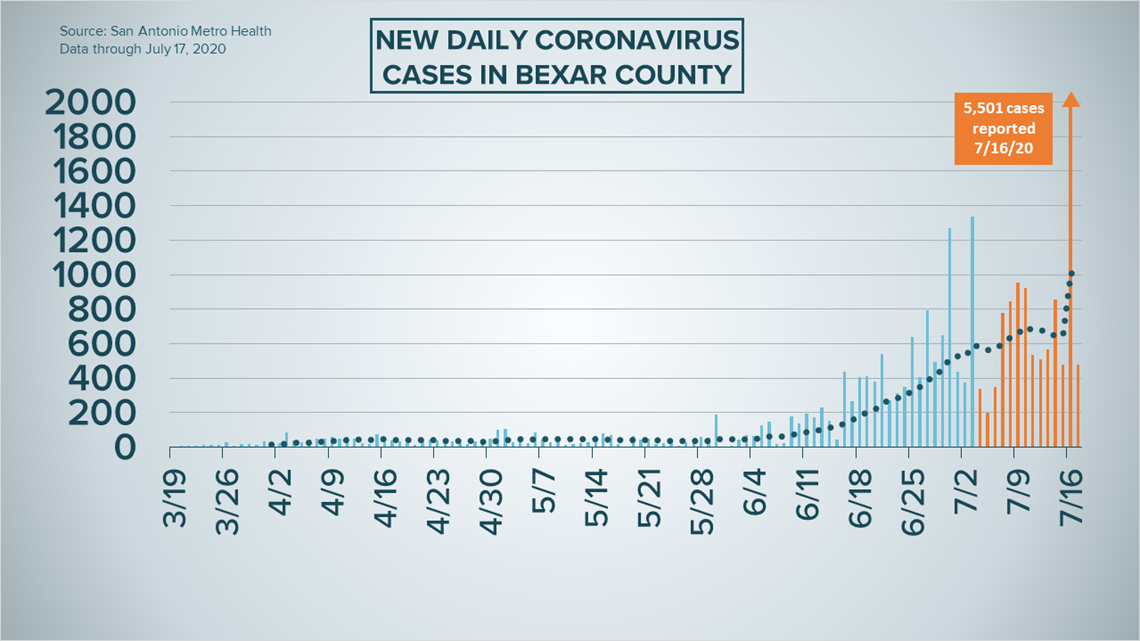
Meanwhile, the region continued a positive trend when it comes to COVID-19 patients in local hospitals. On Friday, Nirenberg said, 1,166 county residents are hospitalized, which is down from 1,202 on Thursday. 298 county residents are on ventilators, while 436 are in intensive care.

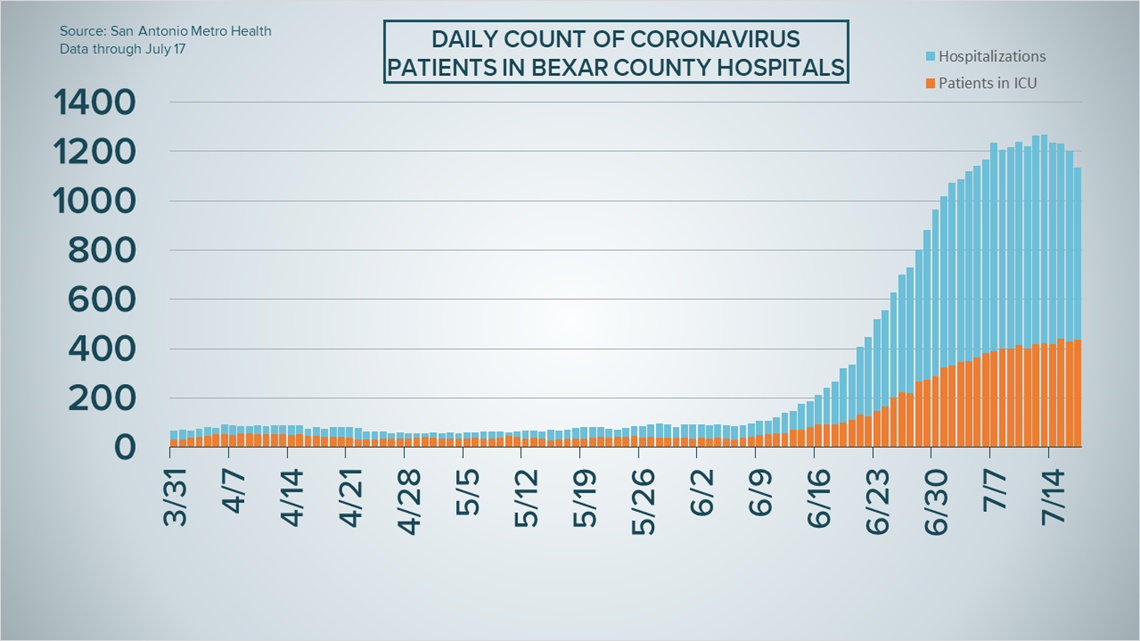
San Antonio Metro Health reports the full daily numbers at 7 p.m.
Coronavirus in Texas
State health officials reported a total of 14,916 newly reported coronavirus cases on Friday. However, about 5,000 of those stem from previously uncounted cases for Bexar County, which local leaders attributed to miscommunication issues. (The county also includes confirmed and probably tests in its total, whereas the state focuses on confirmed tests. More information about that can be found here.)
Taking out that bulk of cases going back a few weeks, Texas health authorities are reporting 10,256 positive tests confirmed over the last 24 hours, bringing the total in the ongoing pandemic to 307,572.
The number of new Texas deaths from virus-related complications, meanwhile, set a new high for the third day in a row, with 174. That's 45 more than the previous high of 129, reported Thursday.

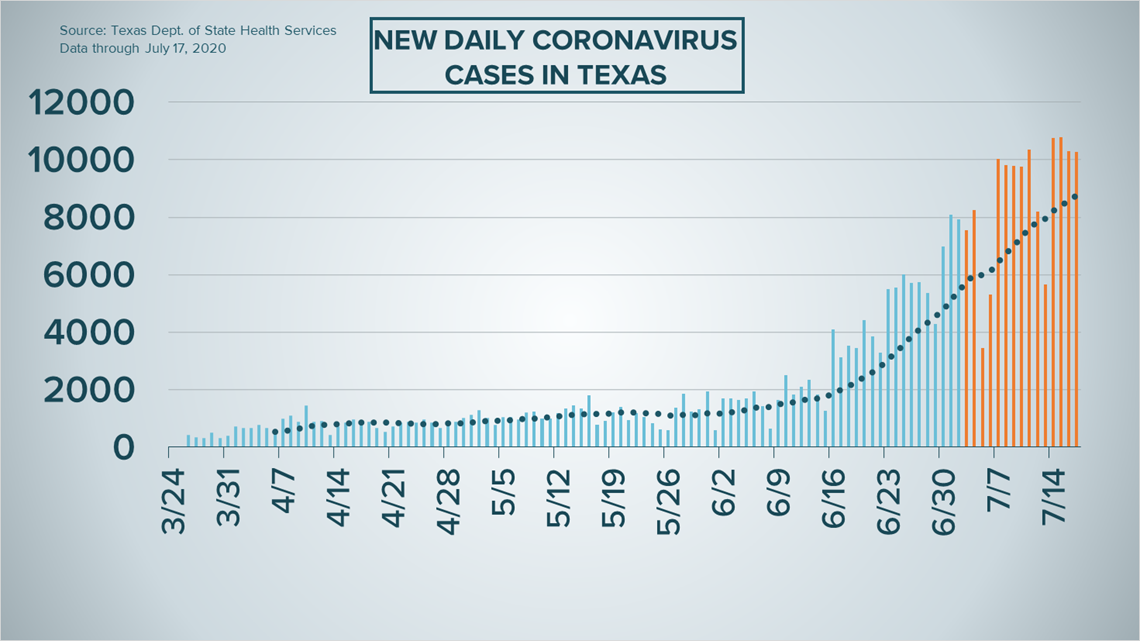

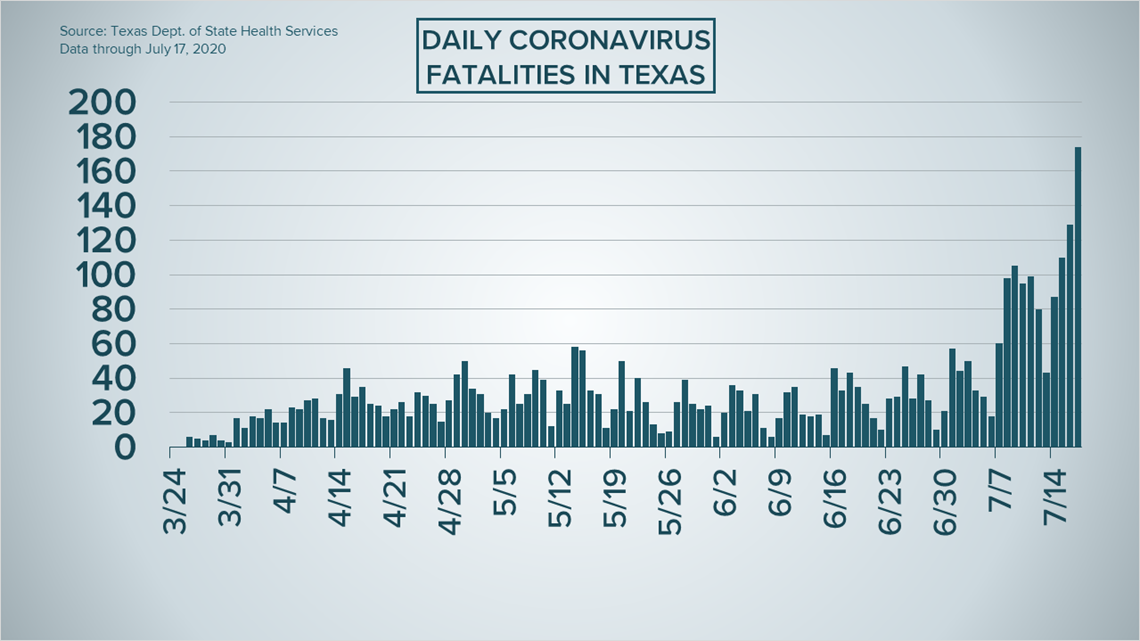
The number of Texans currently being treated in hospitals also set a grim new high, with 10,632. More than 141,646 Texans remain ill with the virus, while an estimated 162,191 residents have recovered.
Latest Coronavirus Headlines
- No lockdown needed if Texans follow mask mandate, governor says
- San Antonio's unemployment rate fell to 8.5% in June
- New studies clarify what drugs help, hurt as COVID-19 treatment
- Would you walk through it? San Antonio restaurant installs entryway that will spray you with disinfectant
- Minorities desperately needed for coronavirus clinical trials
- Spurred by Gov. Greg Abbott's coronavirus handling, Democratic strategists launch PAC to defeat him in 2022
- US surges past 70,000 daily COVID-19 cases for first time
- Basic black, flowers, patriotic: Coronavirus masks become fashion statement
- Drastic COVID-19 case total is due to 'kinks in communication,' Nirenberg says
Coronavirus symptoms
The symptoms of coronavirus can be similar to the flu or a bad cold. Symptoms include fever or chills, cough, shortness of breath or difficulty breathing, fatigue, muscle or body aches, headache, new loss of taste or smell sore throat, congestion or runny nose, nausea or vomiting and diarrhea, according to the Centers for Disease Control.
Most healthy people will have mild symptoms. A study of more than 72,000 patients by the Centers for Disease Control in China showed 80 percent of the cases there were mild.
But infections can cause pneumonia, severe acute respiratory syndrome, kidney failure, and even death, according to the World Health Organization. Older people with underlying health conditions are most at risk.
On June 25, the CDC expanded the list of groups at a higher risk of severe illness due to coronavirus.
Experts determined there was consistent evidence these conditions increase a person's risk, regardless of age:
- Chronic kidney disease
- COPD (chronic obstructive pulmonary disease)
- Obesity (BMI of 30 or higher)
- Immunocompromised state (weakened immune system) from solid organ transplant
- Serious heart conditions, such as heart failure, coronary artery disease, or cardiomyopathies
- Sickle cell disease
- Type 2 diabetes
The CDC believes symptoms may appear anywhere from two to 14 days after being exposed.
Human coronaviruses are usually spread...
- Between people who are in close contact with one another (within about 6 feet).
- Through respiratory droplets produced when an infected person coughs, sneezes or talks. These droplets can land in the mouths or noses of people who are nearby or possibly be inhaled into the lungs.
- Some recent studies have suggested that COVID-19 may be spread by people who are not showing symptoms.
Help stop the spread of coronavirus
- Stay home when you are sick.
- Eat and sleep separately from your family members
- Use different utensils and dishes
- Cover your cough or sneeze with your arm, not your hand.
- If you use a tissue, throw it in the trash.
Lower your risk
- Wash your hands often with soap and water for at least 20 seconds. If soap and water are not available, use an alcohol-based hand sanitizer.
- Avoid touching your eyes, nose, and mouth with unwashed hands.
- Avoid close contact with people who are sick.
- Clean and disinfect frequently touched objects and surfaces.
- The CDC recommends wearing a mask or cloth face covering if you have to be out due to an essential service or essential activity such as going to the grocery store.
- If you are 60 or over and have an underlying health condition such as cardiovascular disease, diabetes or respiratory illnesses like asthma or COPD, the World Health Organization advises you to try to avoid crowds or places where you might interact with people who are sick.

